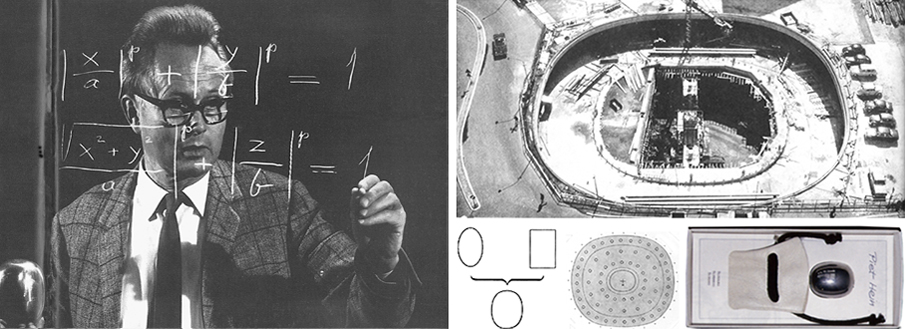

While mathematicians studied supercircles and superellipses to some extent, Gabriel Lamé’s original work did not receive the attention it deserved. In the 1960’s however, Piet Hein, a Danish poet-mathematician-genius, advised the city planners of Stockholm to use a superellipse to make Sergel’s Square.
The shape was intermediate between a rectangle and an oval and provided a compromise to maximize the space for a shopping centre in the middle, and a smooth traffic flow. So Lamé’s supercircles and superellipses proved to be an extremely elegant solution for a real world problem.
This was just the start. For Piet Hein, the superellipse really solved the deep divide between circle and square. He developed many different objects, like superelliptical tables to optimize the available space in restaurants. Since no one actually is sitting at the head of the table, this could be of use in peace negotiations.
To promote these ideas further Piet Hein established the Superegg World Center. The most remarkable aspect of his Superegg, a toy made in brass or wood, which could stand on all sides without falling.